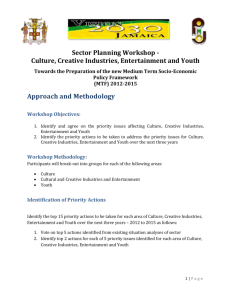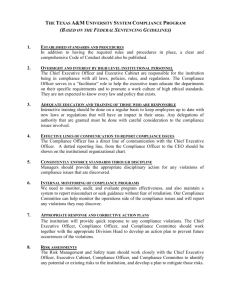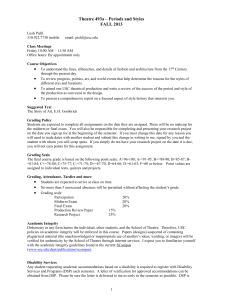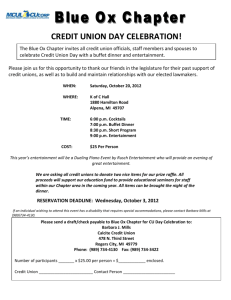Global Marketing Communication
advertisement
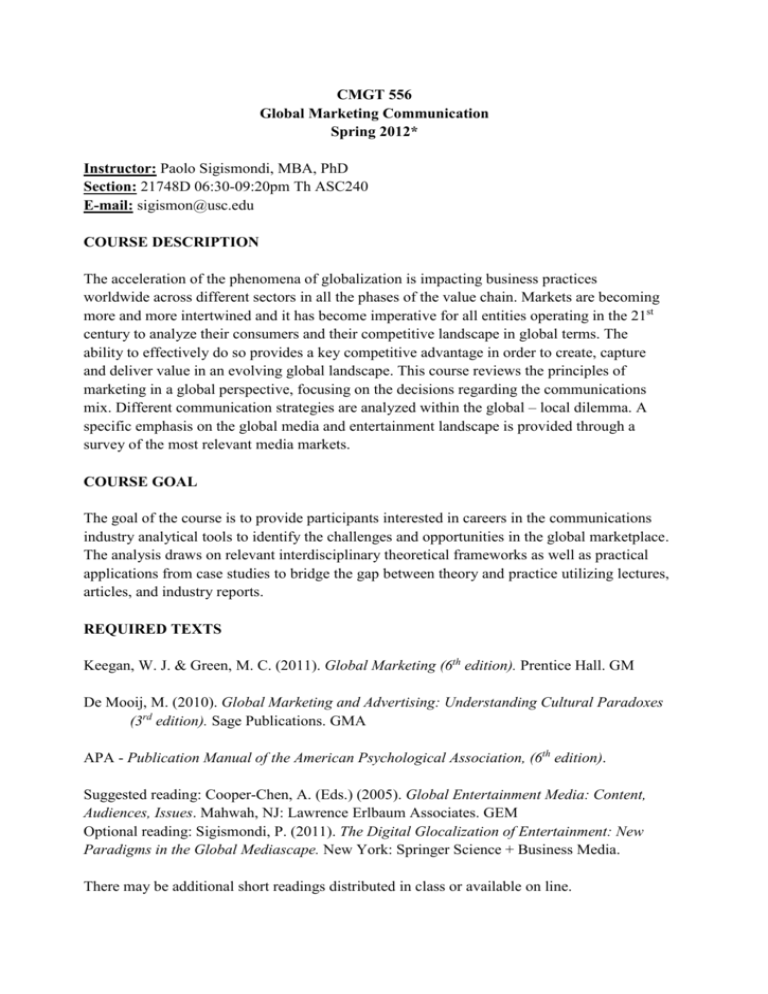
CMGT 556 Global Marketing Communication Spring 2012* Instructor: Paolo Sigismondi, MBA, PhD Section: 21748D 06:30-09:20pm Th ASC240 E-mail: sigismon@usc.edu COURSE DESCRIPTION The acceleration of the phenomena of globalization is impacting business practices worldwide across different sectors in all the phases of the value chain. Markets are becoming more and more intertwined and it has become imperative for all entities operating in the 21st century to analyze their consumers and their competitive landscape in global terms. The ability to effectively do so provides a key competitive advantage in order to create, capture and deliver value in an evolving global landscape. This course reviews the principles of marketing in a global perspective, focusing on the decisions regarding the communications mix. Different communication strategies are analyzed within the global – local dilemma. A specific emphasis on the global media and entertainment landscape is provided through a survey of the most relevant media markets. COURSE GOAL The goal of the course is to provide participants interested in careers in the communications industry analytical tools to identify the challenges and opportunities in the global marketplace. The analysis draws on relevant interdisciplinary theoretical frameworks as well as practical applications from case studies to bridge the gap between theory and practice utilizing lectures, articles, and industry reports. REQUIRED TEXTS Keegan, W. J. & Green, M. C. (2011). Global Marketing (6th edition). Prentice Hall. GM De Mooij, M. (2010). Global Marketing and Advertising: Understanding Cultural Paradoxes (3rd edition). Sage Publications. GMA APA - Publication Manual of the American Psychological Association, (6th edition). Suggested reading: Cooper-Chen, A. (Eds.) (2005). Global Entertainment Media: Content, Audiences, Issues. Mahwah, NJ: Lawrence Erlbaum Associates. GEM Optional reading: Sigismondi, P. (2011). The Digital Glocalization of Entertainment: New Paradigms in the Global Mediascape. New York: Springer Science + Business Media. There may be additional short readings distributed in class or available on line. ADA COMPLIANCE STATEMENT Any student requesting academic accommodation based on a disability is required to register with Disability Services and Programs (DSP) each semester. A letter of verification for approved accommodations can be obtained from DSP. Please be sure the letter is delivered to your instructor as early in the semester as possible. DSP is located in STU 301 and is open 8:30 a.m. – 5:00 p.m., Monday through Friday. The phone number for DSP is 213-740-0776. ACADEMIC INTEGRITY The Annenberg School for Communication is committed to upholding the University’s Academic Integrity code as detailed in the Scampus guide. It is the policy of the School of Communication to report all violations of the code. Any serious violations or pattern of violations of the Academic Integrity Code will result in the student’s expulsion from the Communication major or minor. COURSE REQUIREMENTS 1. Class participation. Students are expected to make informed contributions to class discussions and online activities, coming to class having completed all assigned readings. There may be one-page reaction papers to the materials assigned (weeks 38), and assigned discussion leadership on specific media markets (weeks 9-12). 2. Midterm exam. There will be a take-home midterm exam 3. Course project. Student will individually conduct research on a topic related to the course. The final presentations will take place in the last two weeks of classes, and they must include visual aids and a short paper (8-10 pages suggested). 4. Final exam. There will be a take-home final exam GRADING Requirements will be weighed as follows: Class participation Midterm exam Course project Final exam Total 10% - 50 points 25% - 125 points 40% - 200 points 25% - 125 points 100% - 500 points 2 Tentative Class Schedule Week 1. The global marketing environment: An overview Week 2. Approaching global markets Week 3. Approaching global markets (continued) Week 4. Global market entry strategies Week 5. The global marketing mix: Pricing and distribution decisions Week 6. The global marketing mix: Product decisions and global brands Week 7. The global marketing mix: Integrated communication systems Week 8. The global marketing mix: Integrated communication systems (continued) Week 9. Media markets: Europe and the Americas Week 10. Media markets: Asia, Africa and Middle-East Week 11. Global competitive advantage and the digital revolution Week 12. Global media and the digital revolution: The digital glocalization of entertainment Week 13. Global-local dilemmas and innovation in the 21st century marketplace: Glocalization and reverse innovation Week 14. Project presentations Week 15. Project presentations *Preliminary version of the syllabus, to be updated by January 2012 3





